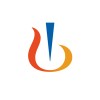A 24-week, Multicenter, proSpective stUdy to Evaluate the PASI 90 Clinical Response Rate and the Safety PRofile of sEcukinuMab 300 mg in Cw6-negativE and Cw6-positive Patients With Moderate to Severe Chronic Plaque-type Psoriasis (SUPREME) (SUPREME)
Plaque Type Psorisis

About this trial
This is an interventional treatment trial for Plaque Type Psorisis
Eligibility Criteria
Inclusion Criteria:
- Subject must have been able to understand and communicate with the investigator and to comply with the requirements of the study and must have given a written, signed and dated informed consent before any study related activity was performed.
- Men or women at least 18 years of age at time of screening.
- Diagnosis of moderate to severe chronic plaque-type psoriasis for at least 6 months (including concomitant psoriatic arthritis as per the Classification Criteria for Psoriatic Arthritis criteria [CASPAR]).
Moderate to severe psoriasis as defined at enrollment by:
- PASI score ≥ 10 or
- PASI score > 5 but < 10 and DLQI ≥10
- Patients that are candidates for systemic therapy, whether treatment naïve or after failed response to other systemic therapy (i.e. cyclosporine, methotrexate and PUVA) or to an anti-TNFα (or is intolerant and/or has a contraindication to these).
Exclusion criteria
- Forms of psoriasis other than chronic plaque-type (e.g., pustular, erythrodermic and guttate psoriasis).
- Cyclosporine or methotrexate therapy within 4 weeks prior to Day 1.
- Anti-TNFα therapy within timelines depending on drug half-life.
- Previous exposure to secukinumab or any other biologic drug directly targeting IL-17 or the IL-17 receptor.
- Previous exposure to ustekinumab or any other biologic drug for the treatment of psoriasis that was not anti-TNFα therapy.
- Intravenous or intramuscular steroids within 2 weeks prior to screening and during screening.
- Ongoing use of corticosteroid topical treatments or UV therapy.
Sites / Locations
- Novartis Investigative Site
- Novartis Investigative Site
- Novartis Investigative Site
- Novartis Investigative Site
- Novartis Investigative Site
- Novartis Investigative Site
- Novartis Investigative Site
- Novartis Investigative Site
- Novartis Investigative Site
- Novartis Investigative Site
- Novartis Investigative Site
- Novartis Investigative Site
- Novartis Investigative Site
- Novartis Investigative Site
- Novartis Investigative Site
- Novartis Investigative Site
- Novartis Investigative Site
- Novartis Investigative Site
- Novartis Investigative Site
- Novartis Investigative Site
- Novartis Investigative Site
- Novartis Investigative Site
- Novartis Investigative Site
- Novartis Investigative Site
- Novartis Investigative Site
- Novartis Investigative Site
- Novartis Investigative Site
- Novartis Investigative Site
- Novartis Investigative Site
- Novartis Investigative Site
- Novartis Investigative Site
- Novartis Investigative Site
- Novartis Investigative Site
- Novartis Investigative Site
- Novartis Investigative Site
- Novartis Investigative Site
- Novartis Investigative Site
- Novartis Investigative Site
- Novartis Investigative Site
- Novartis Investigative Site
- Novartis Investigative Site
- Novartis Investigative Site
- Novartis Investigative Site
- Novartis Investigative Site
- Novartis Investigative Site
Arms of the Study
Arm 1
Arm 2
Experimental
Experimental
Cw6-positive AIN457 300 mg
Cw6-negative AIN457 300 mg
Stratified to Cw6 positive cohort. Investigators and patients were blinded to Cw6 results. All patients were treated according to an induction regimen of two injections of secukinumab 150 mg a week for five weeks starting at baseline (week 0), followed by a maintenance period of two injections per month. At week 16, patients achieving PASI 50 response were eligible to continue on secukinumab for an additional 8 weeks in CORE. Eligible patients with at least a PASI 75 response were included in the extension phase, up to 72 weeks
Stratified to Cw6 negative cohort. Investigators and patients were blinded to Cw6 results. All patients were treated according to an induction regimen of two injections of secukinumab 150 mg a week for five weeks starting at baseline (week 0), followed by a maintenance period of two injections per month. At week 16, patients achieving PASI 50 response were eligible to continue on secukinumab for an additional 8 weeks in CORE. Eligible patients with at least a PASI 75 response were included in the extension phase, up to 72 weeks
Outcomes
Primary Outcome Measures
Secondary Outcome Measures
Full Information
1. Study Identification
2. Study Status
3. Sponsor/Collaborators
4. Oversight
5. Study Description
6. Conditions and Keywords
7. Study Design
8. Arms, Groups, and Interventions
10. Eligibility
12. IPD Sharing Statement
Learn more about this trial
